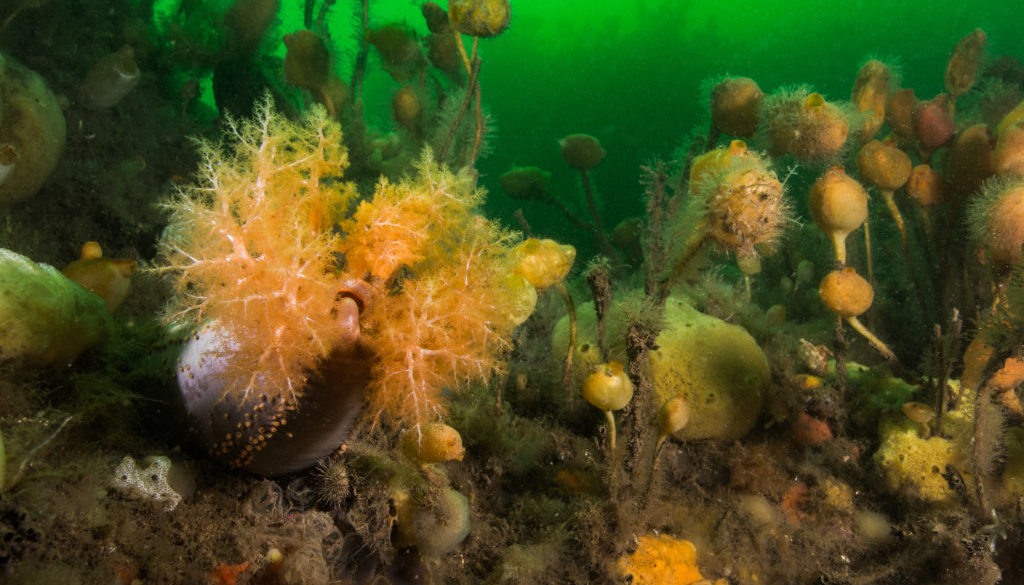Progress on marine protection hailed in Newfoundland and Labrador, new challenge issued for 2030
June 3, 2019, St. John’s – A report released today by the Canadian Parks and Wilderness Society (CPAWS) finds that Canada has made more progress in the past three years in protecting its ocean territory than ever before in the country’s history.
In Newfoundland and Labrador since 2016, 11,580 km2 has been protected through the newly announced Laurentian Channel Marine Protected Area and 109,314 km2 is now being managed in 14 marine refuges such as the Northeast NF Slope Closure, Division 30 Coral Closure and Funk Island Deep Closure, to name a few.
“We are extremely pleased that Newfoundland and Labrador has focused on increasing the percentage of its ocean territory protected with greater focus on long-term protection. This is especially important for locally important species such as Atlantic cod, endangered Leatherback Sea Turtle, threatened Northern Wolfish and important sensitive benthic areas of coral and sponges,” says Tanya Edwards, Executive Director, CPAWS Newfoundland and Labrador.
Among ten countries with the largest extents of ocean territory, Canada now is 7th in terms of proportion protected. There is still significant work to do to catch up to the international leaders like the UK, Chile and Australia.
Canada made a commitment to protect 10 percent of its ocean territory by 2020 when it signed on to the latest UN Convention on Biological Diversity in 2010.
However, in early May the International Science-Policy Platform on Biodiversity and Ecosystem Services released a report showing that species’ rates of survival have rapidly worsened in the past few decades. In response, CPAWS states that Canada now needs to set a larger goal of protecting 30 percent of its ocean territory by 2030.
“Thirty percent is the minimum that scientists recommend we protect to give marine species the best possible hope of survival. As we document, this goal is absolutely achievable for Canada, given the amount of preliminary work that has already occurred to identify future marine areas for conservation. Eventually we need to get to 50%. What is required is the political will to keep moving forward. We already know that Canadians strongly support increasing the level of ocean protection,” says Sabine Jessen, National Director of CPAWS’ Ocean Program.
The 2019 CPAWS Ocean Report contains a detailed blueprint for how Canada can achieve 30% ocean protection by 2030.
CPAWS also congratulates the federal government for amending its policies and rules for new marine protected areas this year to ensure that all harmful practices to wildlife are prohibited within their borders.
“This policy change was long overdue, and we’re extremely pleased to see it happen. We are strongly recommending that the government apply these new policies and rules to all of Canada’s existing marine protected areas and refuges, ” adds Jessen.
Canada has one of the largest ocean territories and the longest coastline of any nation, bordering the Atlantic, Pacific and Arctic oceans and covering nearly six million km2.
As Canada’s voice for wilderness, CPAWS has been a strong advocate for improved marine protection for the past 25 years, working in partnership with all levels of government, community groups, Indigenous Peoples and scientists.
In Newfoundland and Labrador, CPAWS has been working with local communities, the province and federal government since 2003 to advance marine conservation. Edwards adds, “Next steps for ocean conservation in Newfoundland and Labrador include working on networks of marine protected areas in the Newfoundland and Labrador Shelves and the Gulf of St. Lawrence.”
CONTACTS:
Tanya Edwards, Executive Director
tedwards@cpaws.org
709-726-5800
Mary Alliston Butt, Marine Coordinator
mabutt@cpaws.org
709-726-5800
View full report https://cpaws.org/wp-content/uploads/2019/06/CPAWS_oceans_report2019_ENG_web.pdf
Photos available upon request.


